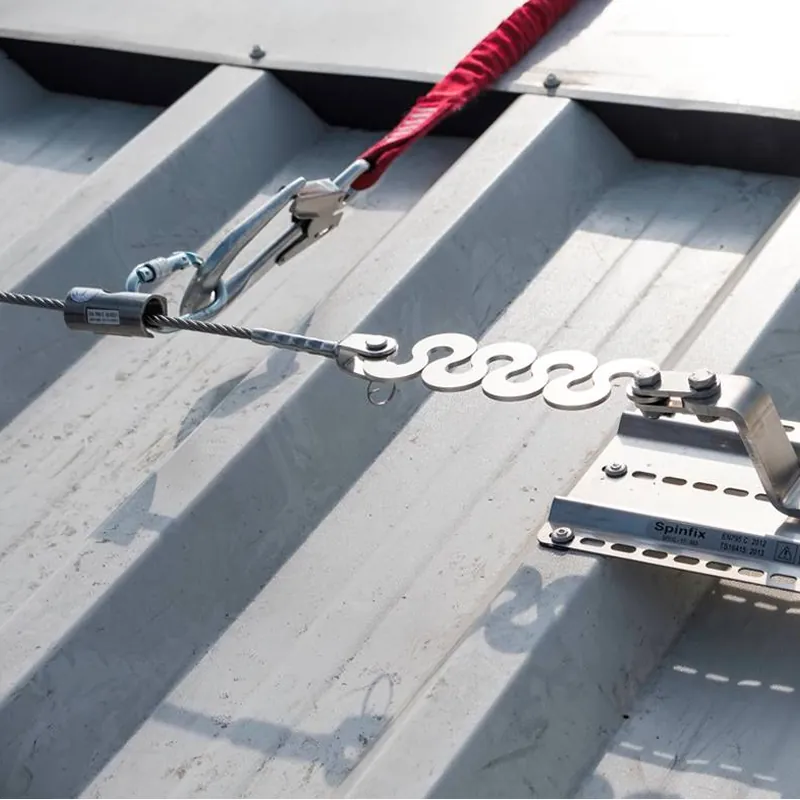Safety Lifelines for Working at Height
Working at height is an integral part of various industries, including construction, maintenance, and telecommunications. However, it also poses a significant risk of falls, which can result in severe injuries or even fatalities. To mitigate these risks, Safety Lifelines are employed as essential fall protection equipment.
What are Safety Lifelines?
Safety lifelines are crucial components of fall protection systems, designed to arrest a worker's fall and prevent them from reaching the ground or a lower level. They typically consist of a flexible cable or rope that is securely anchored to a strong support structure, such as a roof, beam, or scaffold. Workers connect their harnesses to the lifeline using a lanyard, ensuring they are constantly protected throughout their work at height.
Purposes of Safety Lifelines
Safety lifelines serve multiple purposes in safeguarding workers engaged in elevated tasks:
1. Fall Arrest: The primary function of safety lifelines is to arrest a fall in the event of a misstep or loss of balance. The lifeline and lanyard work together to stop the worker's descent, preventing them from plummeting to the ground.
2. Fall Restraint: In certain situations, safety lifelines can also be used for fall restraint. This involves positioning the lifeline in a way that restricts the worker's movement, preventing them from reaching a fall hazard, such as the edge of a roof.
3. Positioning Support: Some safety lifeline systems incorporate positioning devices that allow workers to lean or recline while maintaining their connection to the lifeline. This provides hands-free support, enhancing safety and efficiency.

Types of Safety Lifelines
Safety lifelines are available in various configurations to suit different work environments and applications:
1. Horizontal Lifelines: These lifelines extend horizontally along a work surface, such as a rooftop or catwalk. Workers can move freely along the lifeline, with their lanyard connecting them at all times.
2. Vertical Lifelines: Vertical lifelines are used for tasks involving vertical ascent or descent, such as climbing towers or accessing confined spaces. They provide continuous protection throughout the worker's movement.
3. Travel Lifelines: Travel lifelines are designed for workers who need to traverse long distances at height. They often incorporate trolleys or carriages that allow workers to glide along the lifeline, minimizing physical exertion.
Proper Usage of Safety Lifelines
To ensure the effectiveness of safety lifelines, proper usage is crucial:
1. Inspection: Before each use, thoroughly inspect the lifeline, lanyard, and harness for any signs of damage or wear. Never use defective equipment.
2. Anchorage: Securely anchor the lifeline to a strong and stable support structure that can withstand the anticipated fall forces.
3. Connection: Properly connect the lanyard to the harness and ensure it is securely fastened.
4. Positioning: Position the lifeline appropriately to provide adequate protection throughout the work area.
5. Monitoring: Regularly monitor the lifeline system for any signs of wear or damage, and replace components as needed.
Conclusion
Safety lifelines play a vital role in safeguarding workers engaged in activities at height. By understanding their purpose, types, and proper usage, employers and workers can effectively minimize fall hazards and promote a safe work environment. Prioritizing fall protection measures, including the proper implementation of safety lifelines, is essential for preventing workplace accidents and ensuring the well-being of workers in elevated settings.
Why Choose SAIVS™ as Your Supplier?
With 20 years of industry experience, SAIVS is a leading Chinese manufacturer of high-quality tools, offering competitive pricing and excellent customer service.We pride ourselves on exceptional quality control, extensive experience, and comprehensive after-sales service.